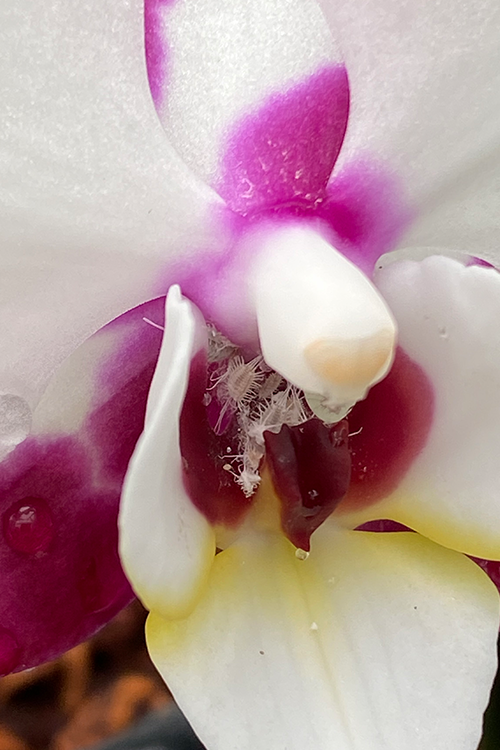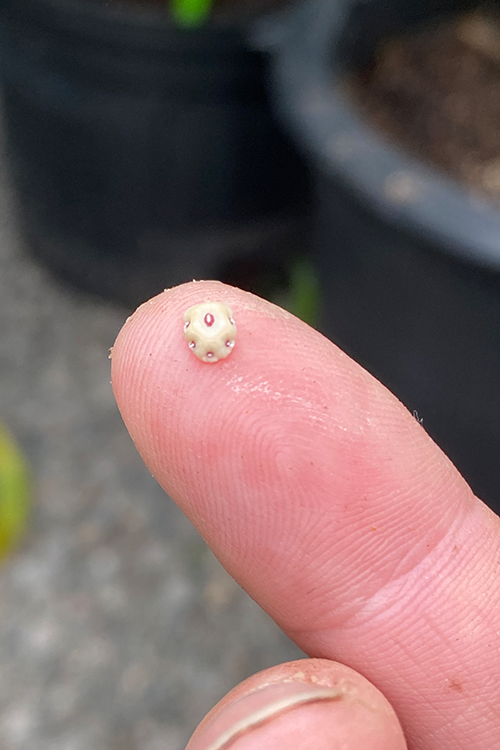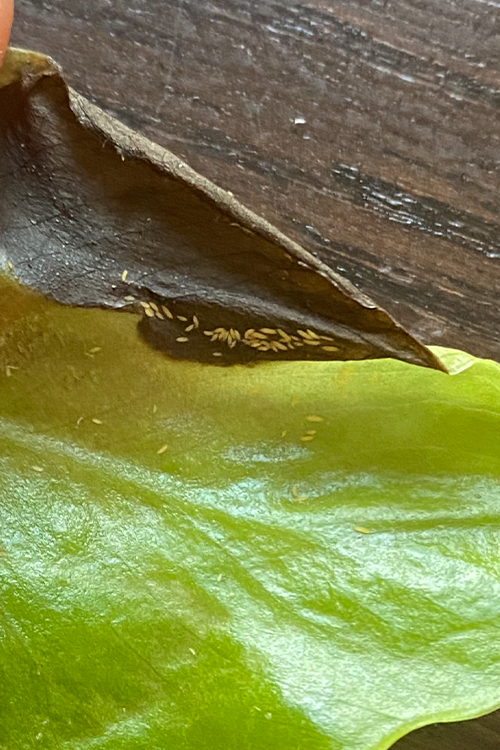pest guide
Thicket is committed to eco-friendly pest control and will never recommend a harmful pesticide for outdoor or indoor plants. All of our pest control products are omri-certified and non-toxic. Eco-friendly insecticidal soaps, such as Bonide and Safer brands, work wonders. Many of these pests like to hide in crevices, folds, and undersides of leaves. Be sure to check your entire plant for colonies and sneaks, and ensure that the liquid covers all surfaces of your plant.
mealy bugs
Appearance
Small, white, and fuzzy
About 3/16 inch
Long “tail” (almost resembling a horseshoe crab)
Detection:
Check undersides, crevices, and veins of leaves for colonies
White powdery secretions on leaves
Honeydew droplets
Discolored leaves
Treatment:
Initial washing/wiping of leaves with rag
Use cotton swabs dipped in alcohol for targeted removal*
Heavy spray of insecticidal soap - check back every two days for hatched colonies
* Use with caution- plants with tough leaves like succulents or ficus can take a direct spray of 75% isopropyl alcohol. For large infestations, you may need to take this approach. Watch your plant closely to see if there is any leaf damage, but we have had great success with this method on plants such as jade, ficus, and palms.
aphids
Appearance:
Small, soft-bodied, and pear shaped
Around ⅛ inch long
Green, black, white, or yellow
Flightless
Detection:
Honeydew on leaves (aphid poop!)
Molted Skins
Discolored leaves, usually in clusters of spots
Treatment:
Spray wash - use a strong stream of water to knock insects off of foliage
Alcohol swab - use a Q-tip with isopropyl alcohol to target hard-to-reach areas
Insecticidal soap (Safer, Neem, Bonide) - be sure to apply the product in all nooks and crannies
scale
Appearance:
There are two types of scale - soft and armored
1/16 - 1/8 inch
Soft scale produces honeydew (a sticky secretion) while armored scale does not
Round, shell-like coverings protect the tiny insects inside
Mobile, but slow
Detection:
Yellowing leaves
Look for honeydew on leaves
In most cases, you will see them - they often look like a bump or wart on your plant's leaf or stem
Treatment:
Examine the entire plant closely and pluck each scale off with hands or tweezers
Give the plant a generous spray of insecticidal soap and watch closely for new hatches
Repeat if necessary
Fungus Gnats
Appearance
1/16-1/8th inch long
Black body with clear grey wings
Detection:
You’ll see them! Fungus gnats will make themselves known. Usually, they will take flight when disturbed by water or movement. Look carefully on soil surfaces where they live.
Treatment:
Sticky traps work wonders. We carry yellow sticky paper traps that are a passive way to keep fungus gnats at bay.
Systemic insecticide soil drench
Let your plant dry between waterings unless they require otherwise. Fungus gnats thrive in moist soil where they feed on decaying fungi and roots. They are relatively harmless to the health of your plants, but leaving them uncontrolled could get a bit…buggy.
thrips
Appearance:
Adults- 1/16 inch slender, white, small wings
Larvae form- 1/16 inch, dark eyes, slim tan bodies
Detection:
Look for spotty discolored leaves - thrips suck fluid from leaves causing streaking and distortion


